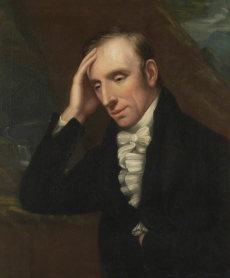
Email: reecejordan98@hotmail.co.uk
Total Article : 168
About Me:18-year-old sixth form student, studying English Literature, History and Government and Politics. My articles will broadly cover topics from the current affairs of politics to reviews of books and albums, as well as adding my own creative pieces, whether it be short fiction or general opinion.

Thus, the joyfully harmonious image is something projected onto them by the speaker, an act of imagination that Wordsworth himself admits to sometimes succumbing to: ‘These processes of imagination are carried on either by conferring additional properties upon an object, or abstracting from it some of those which it actually possesses, and thus enabling it to re-act upon the mind which hath performed the process, like a new existence.’ The speaker within the poem may be said to be ‘conferring additional properties upon’ nature out of a desperation, which reaches its climax in the final stanza. The ‘reason to lament / What man has made of man’ (ll. 23-24) is contingent upon the anaphoric conjunction ‘If’: ‘If I these thoughts may not prevent, / If such be of my creed the plan’ (ll. 21-22). As Geoffrey Hartman states: ‘Wordsworth may be afflicted with the thought that appearances betray, that the evidence of sight is deficient, and even when not deficient, unable to overcome.’ If the ‘plan’ doesn’t fit how the speaker is projecting it then the ‘reason to lament’ seems vacuous. Is nature an ‘avian choir singing in joyful unison’, as Campbell suggests, or is that something the speaker wants to hear? If nature is bereft of the narrative voice’s projections onto it, then arises the disturbing possibility that there is no antidote to what ‘man has made of man’, no idyllic natural state to return to. John Jones’s assertion that for Wordsworth: ‘Everything, for him, was what it was, and it was not anything else: the thing done or suffered, the thing seen or heard or read, touched him because it was so’, is thus undermined by such doubt prevalent within the poem.
Like the nature described within it, the poem has an appearance. It seems to establish a dichotomy of concordant nature with the solitariness of humanity, but it would be a mistake to derive only such a meaning from it. Wordsworth illustrates the frustration of wanting to think the ‘thing touched him because it was so’ whilst also recognising the human urgings and abstractions that allow such feeling to occur.
Another way in which the volume is ‘not as it seems’ is how Wordsworth exploits and frustrates traditions of form. In the case of his ballad, ‘The Thorn’, as Ann Wierda Rowland states, ‘The poem takes its landscape of woman, thorn tree, pool and mound from such old Scottish ballads as ‘The Cruel Mother’, from a tradition in which the thorn tree is commonly associated with the misery of child murder.’

0 Comment:
Be the first one to comment on this article.